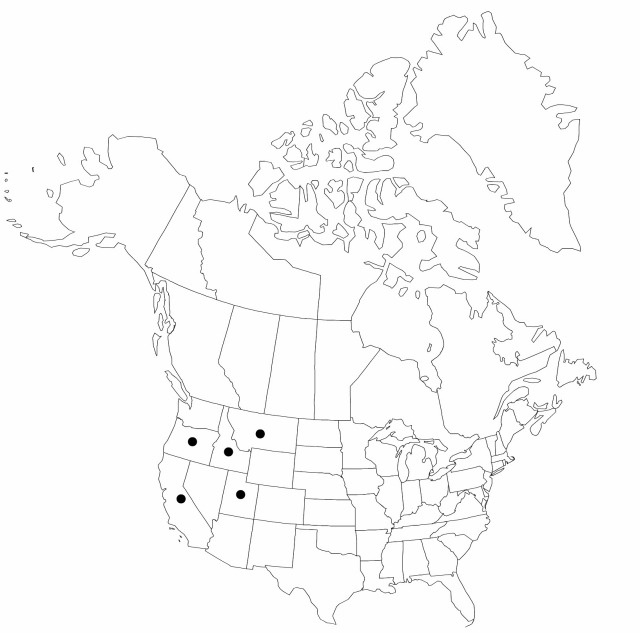Carex idahoa
Bot. Gaz. 21: 5. 1896.
Plants loosely cespitose. Culms 25–40 cm, distally scabrous. Leaves 2–5 mm wide. Inflorescences: proximal bracts shorter than inflorescences; spikes erect, separate, short-pendunculate, short-oblong or elongate, 10–25 × 5–7 mm; lateral 1–3 spikes pistillate or absent, scarcely longer than 1/2 the length of terminal spike; terminal spike gynecandrous, pistillate, or, infrequently, staminate. Pistillate scales brown or almost black, margins narrow-hyaline, lanceolate, as long as, usually longer and as wide as perigynia, midvein lighter colored than body, conspicuous, frequently raised, prominent, distally scabrous, apex acute to mucronate. Perigynia ascending, pale-yellow or brown, veinless to few-veined, elliptic to obovate, 2–3 × 1.5–1.75 mm, distal margins serrulate, apex abruptly beaked, smooth; beak 0.2–0.3 mm, truncate or shallowly bidentate, serrulate. Achenes nearly filling body of perigynia.
Phenology: Fruiting Jun–Sep.
Habitat: Riparian moist meadows
Elevation: 2000–2600 m
Distribution

Calif., Idaho, Mont., Oreg., Utah.
Discussion
Of conservation concern.
Selected References
None.
Lower Taxa
"shortened" is not a number.
